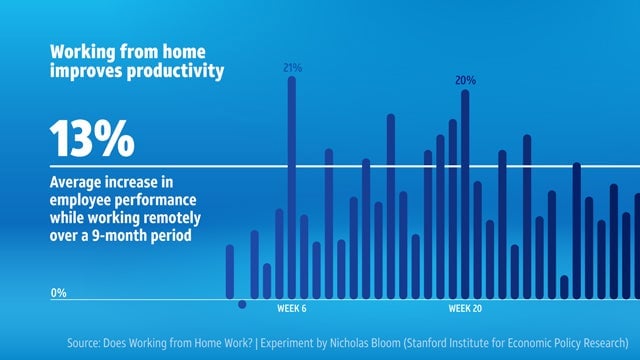Expanding your company’s footprint? Here’s how to keep employees connected for maximum productivity
If you’re the executive of a growing midsize company, you may not know where all of your employees are at any given time—and that’s a good thing.


If you’re the executive of a growing midsize company, you may not know where all of your employees are at any given time—and that’s a good thing.
Your sales force is traveling around the country landing clients, while your customer service team is providing support around the clock thanks to your new office on the West Coast. Meanwhile your direct report is buckling down from her apartment to finish that earnings report. Providing a flexible environment where employees can excel from the office, home, or road allows you to tap into your workers’ full potential.
But as your workforce grows increasingly decentralized, it becomes essential to ask what software and systems are needed to maximize their productivity. The first step according to AT&T Business? Providing digital solutions that let colleagues link up whether they’re based down the hall or in another state. In fact, data suggests that when workers are able to efficiently collaborate, they’re happier and more productive, as well as more likely to feel connected to the organization as a whole.
An uptick in the number of company workspaces is a clear tipping point to update your collaboration tools, from efficient file-sharing to robust mobile connectivity. Here are the signs to watch and solutions to deploy when your midsize business is ready to widen its scope.

Three signs you’re ready for new collaboration tools
Growing midsize businesses should be on the lookout for clues that it’s time to invest in scalable collaboration solutions. Here are three indicators that you’re due for an upgrade:
🔍 You’ve got more file-sharing and video conferencing applications than you can count.
🔍 Remote employees are dialing into meetings or hosting calls via devices that aren’t securely connected.
🔍 Your distributed employees are juggling multiple devices on a daily basis.
Three ways to get your workforce on the same page
If you’re facing these signs, it’s time to seek out progressive collaboration tools to help distributed workers serve a more effective role in your organization’s continued growth. AT&T Business offers a flexible, cloud-based solution that makes it possible for employees to log in from anywhere to access near real-time integration of communication services like desktop sharing and web conferencing.
To upgrade their collaboration ecosystem, companies need to develop a comprehensive, integrated plan. AT&T Business has outlined some strategic guidelines for your expanding midsize business:
💻 Adopt a single, cloud-based solution.
💻 Minimize security risks via VPNs.
💻 Ensure your collaboration platform supports all devices.
As distributed workforces continue to rise, midsize companies stand to leverage their expanding geographic footprint. But in order to benefit from this tipping point and the productivity of satellite offices and remote workers, employees need the collaboration tools to succeed: efficient file-sharing, robust mobile connectivity, and coordinated software upgrades. AT&T Collaborate offers a flexible solution that makes it simple for companies to scale with a dynamic workforce. By staying agile and improving communication, businesses can forge a pathway for growth among teams, between employees and customers, and even across oceans.